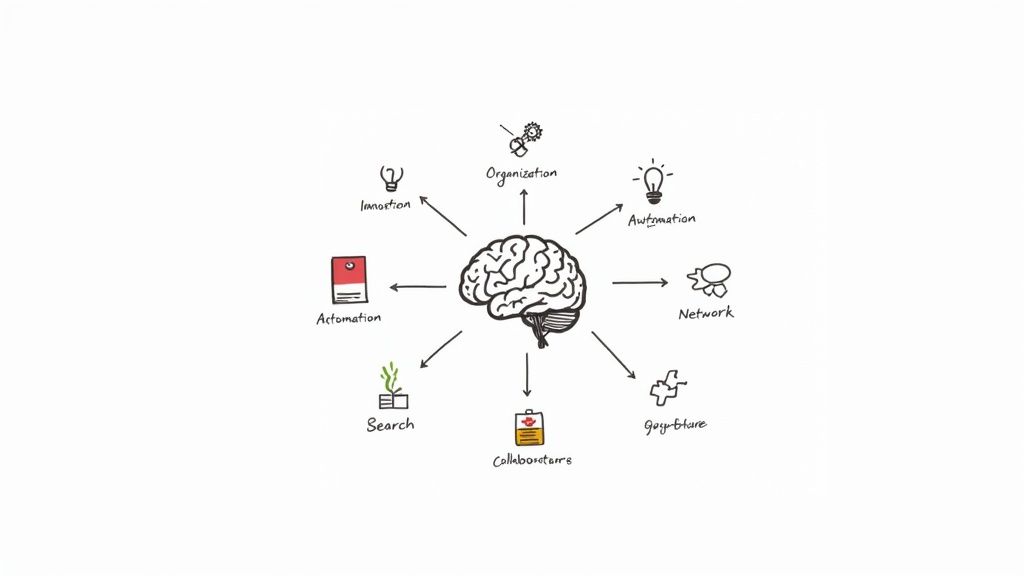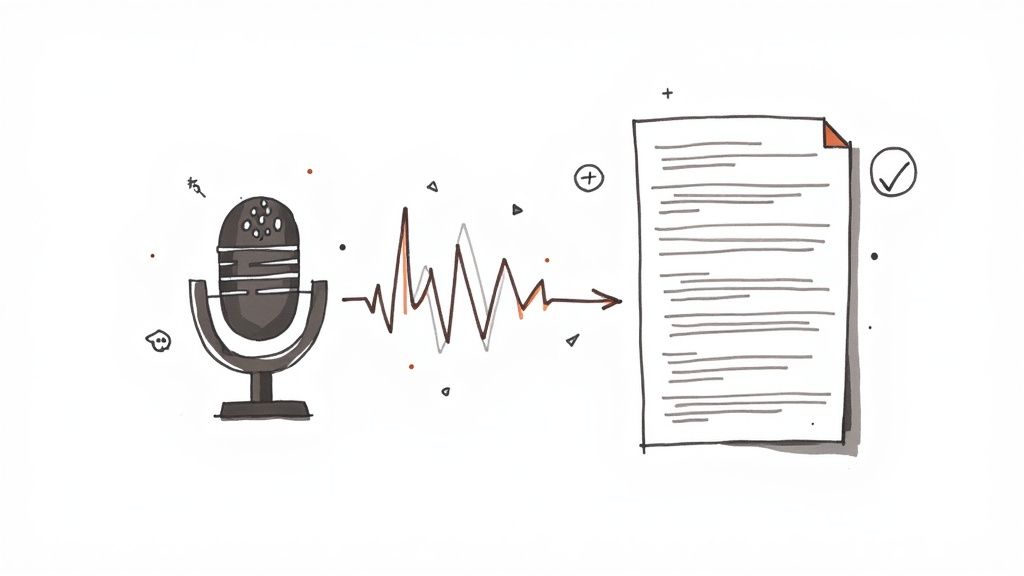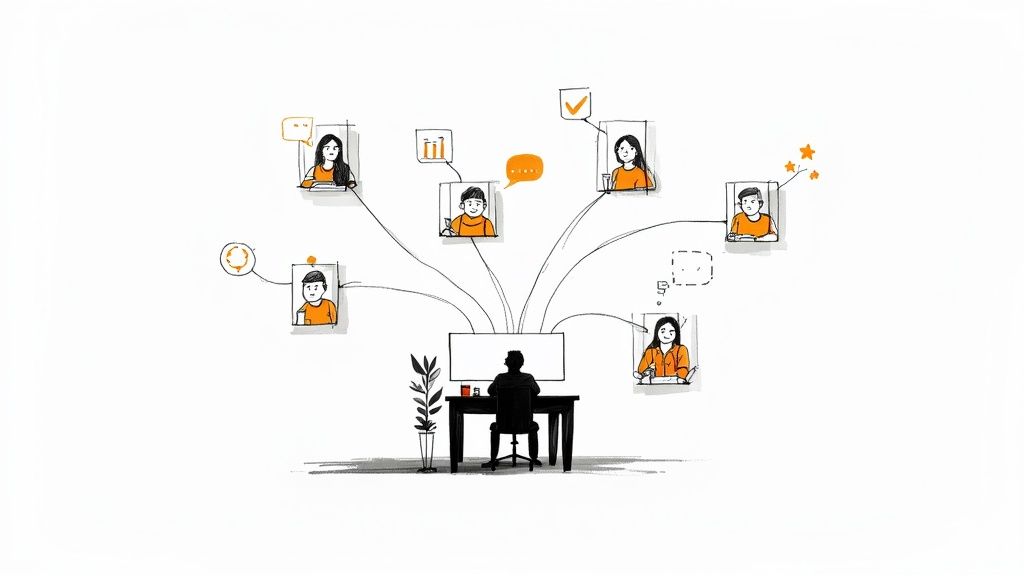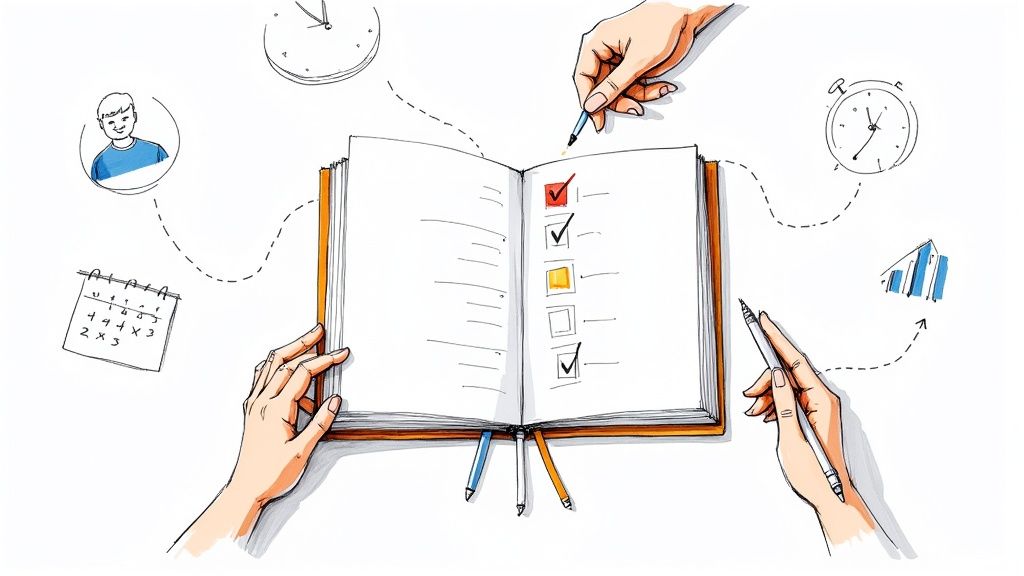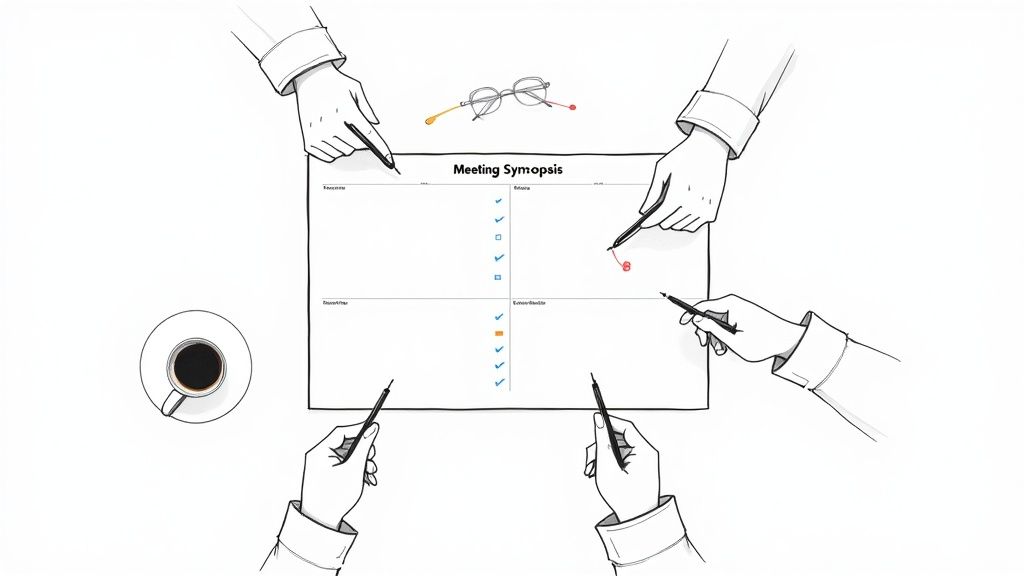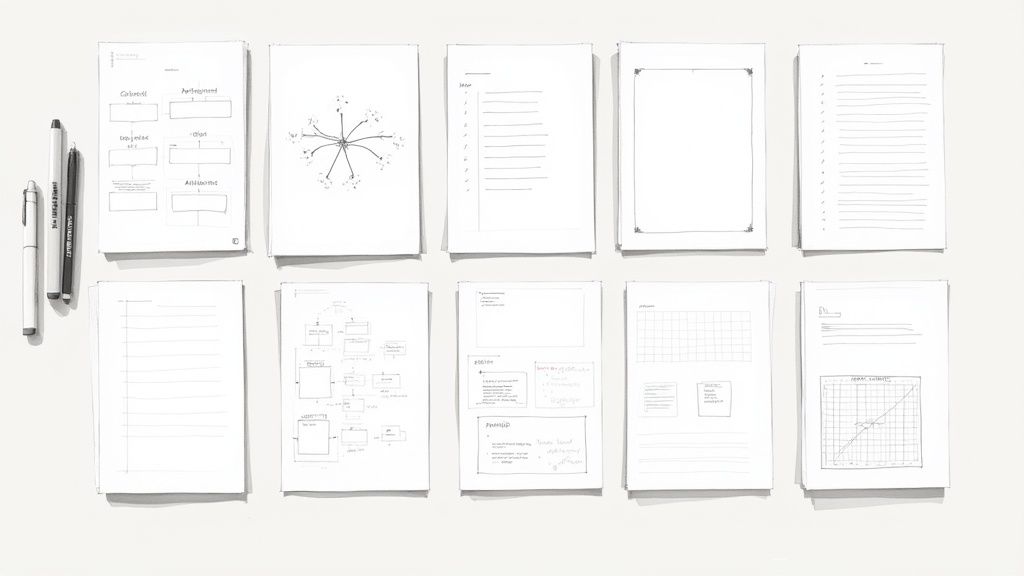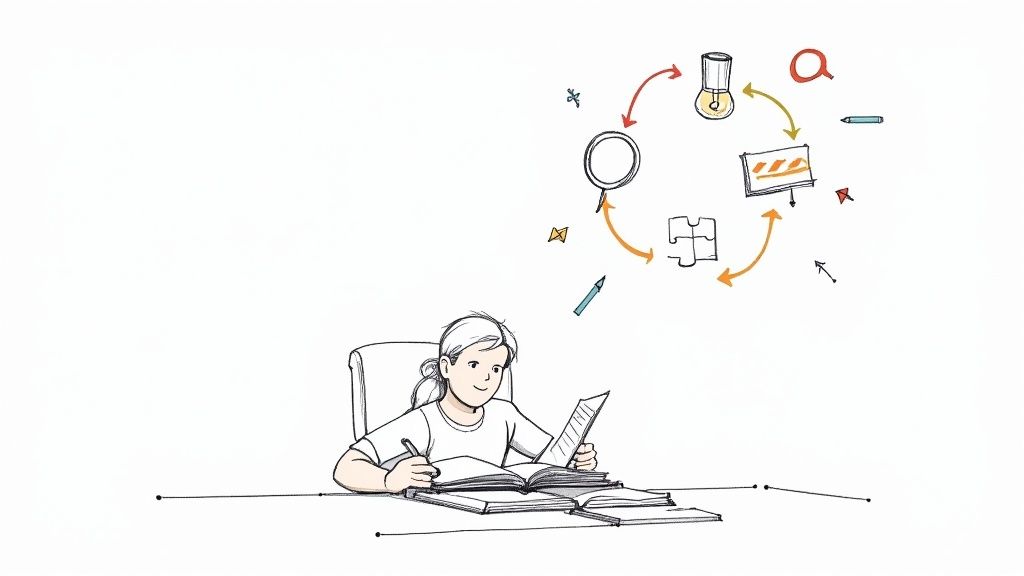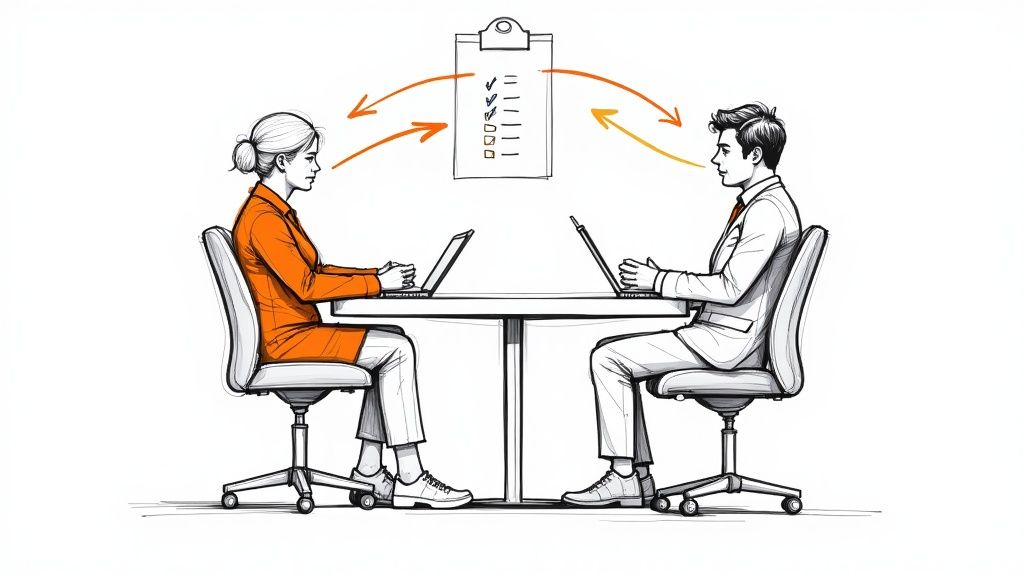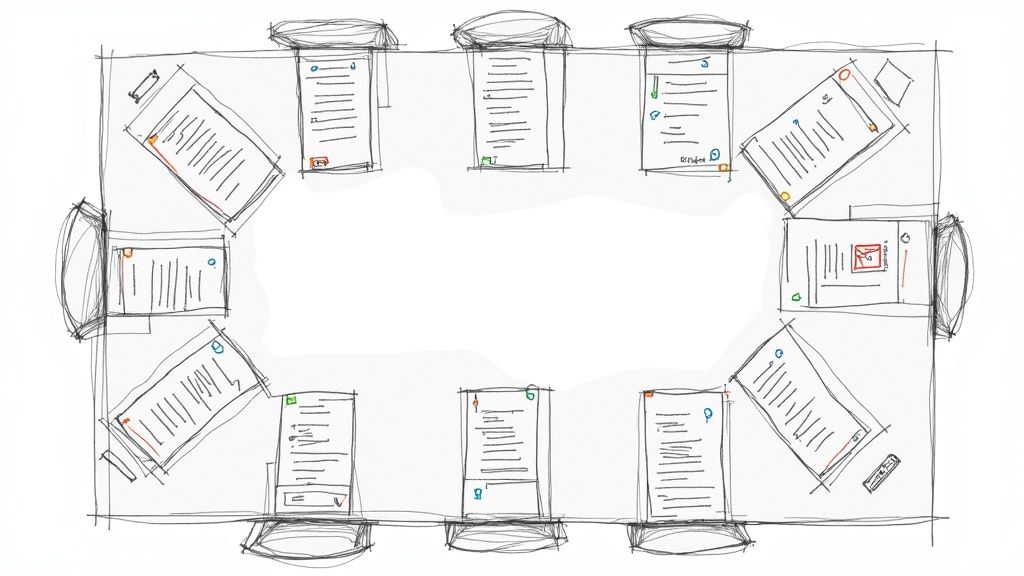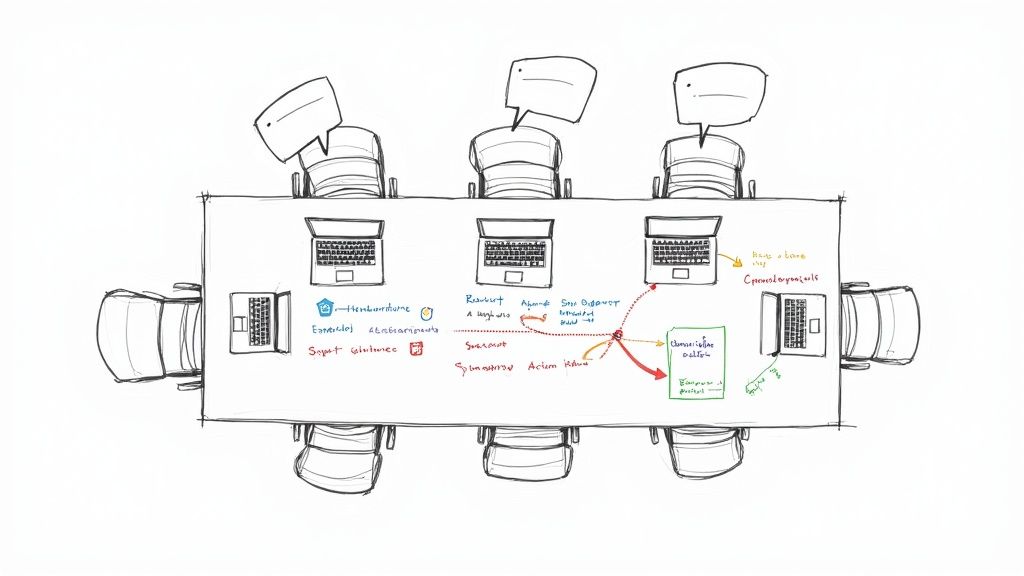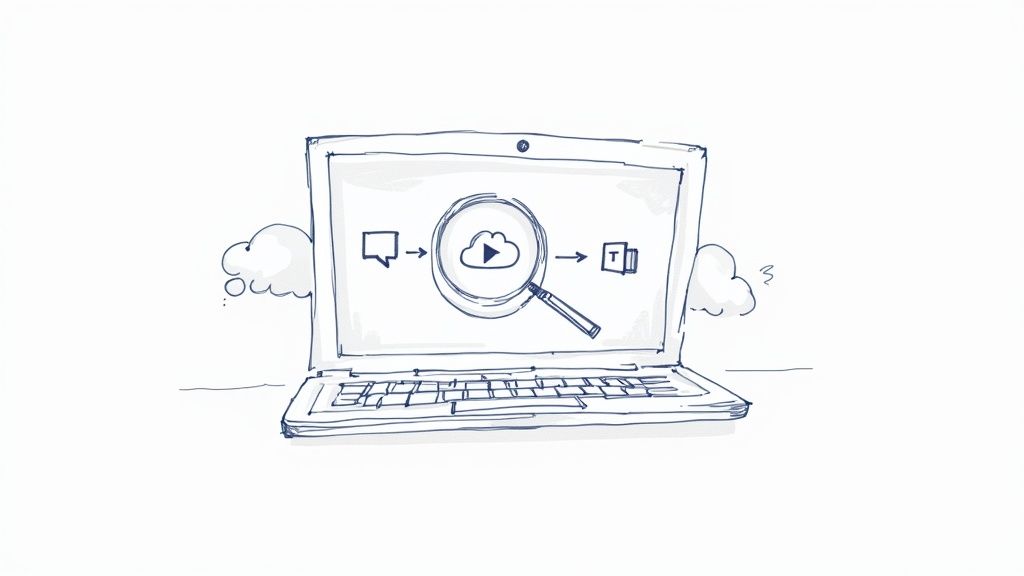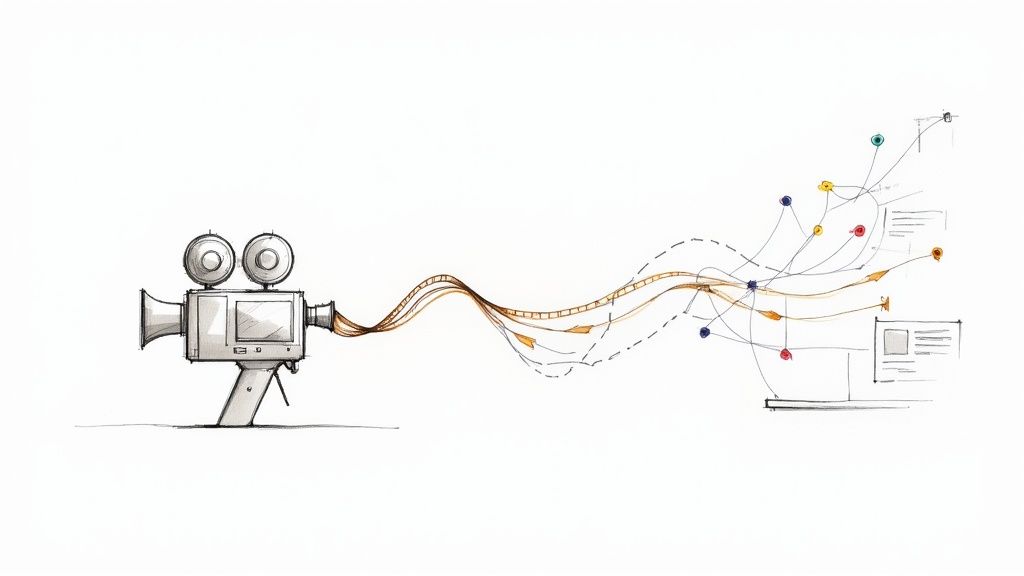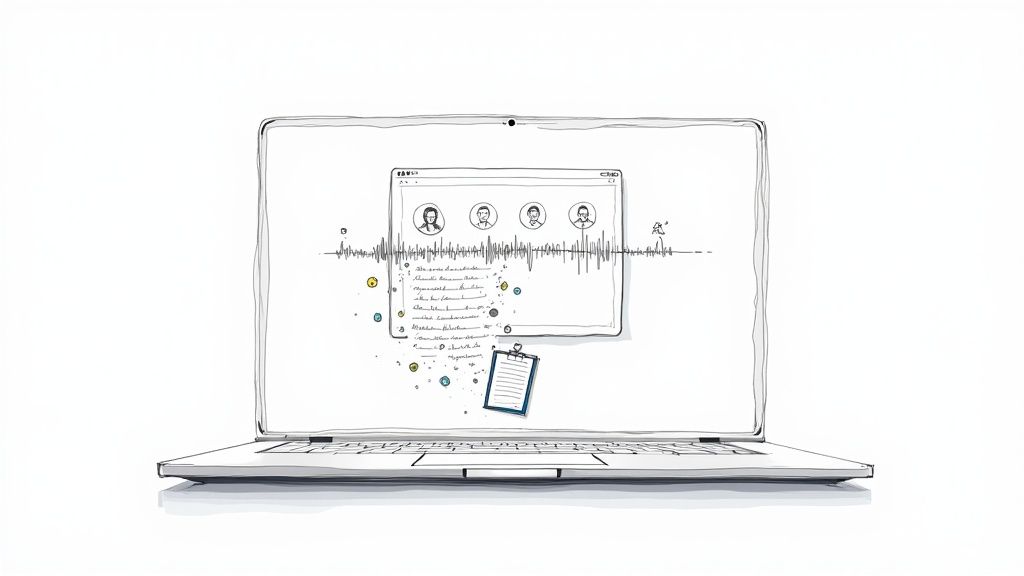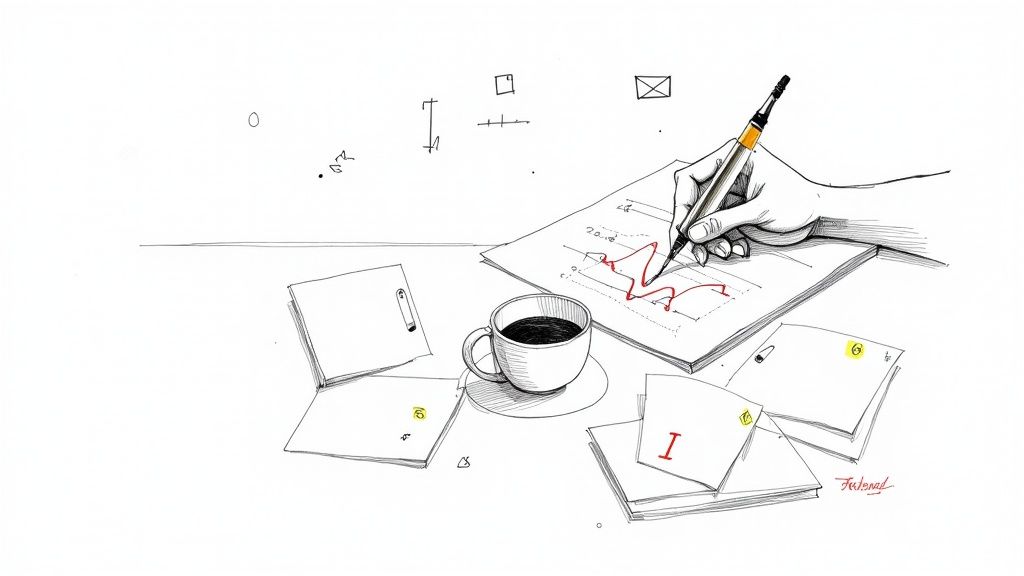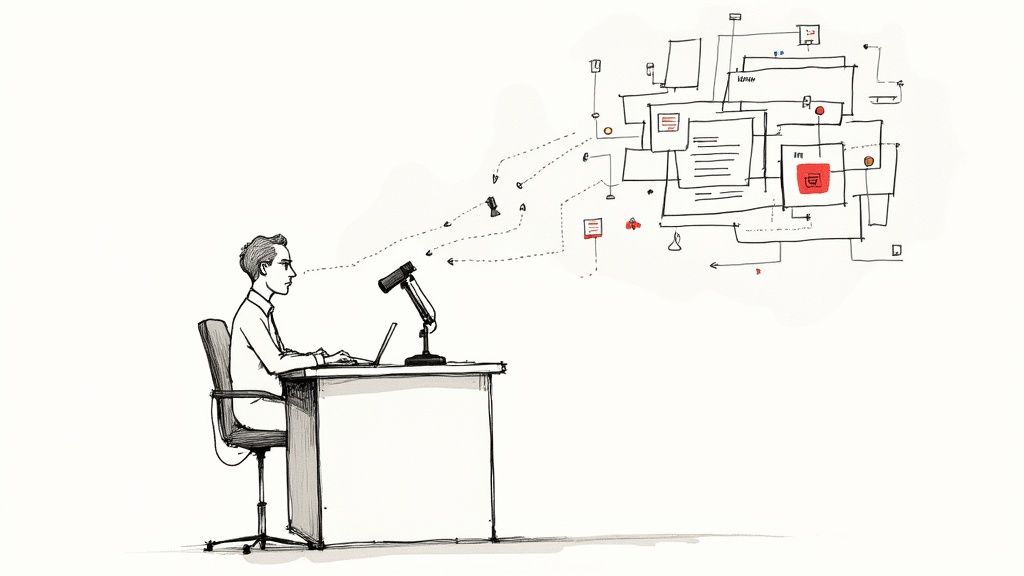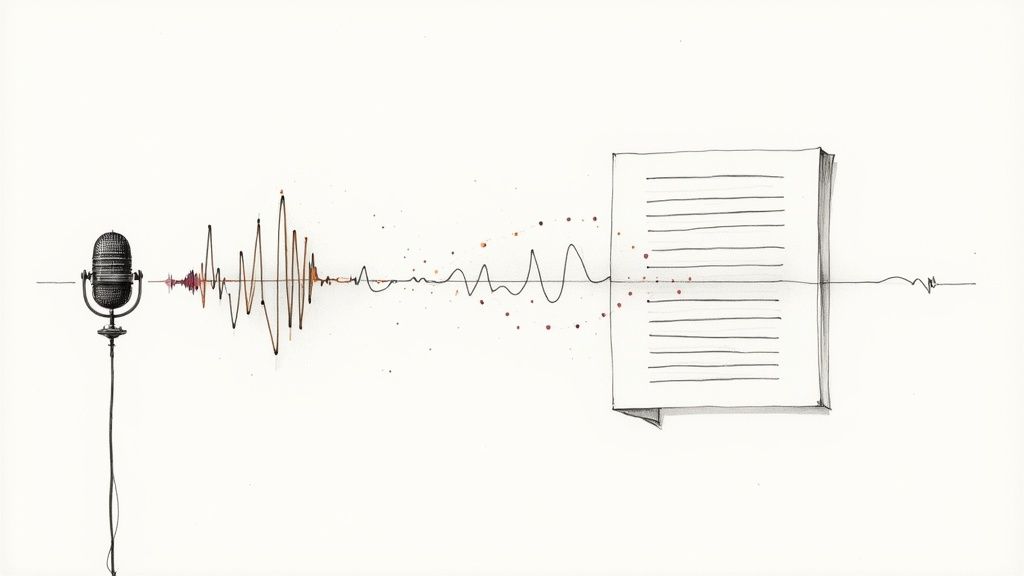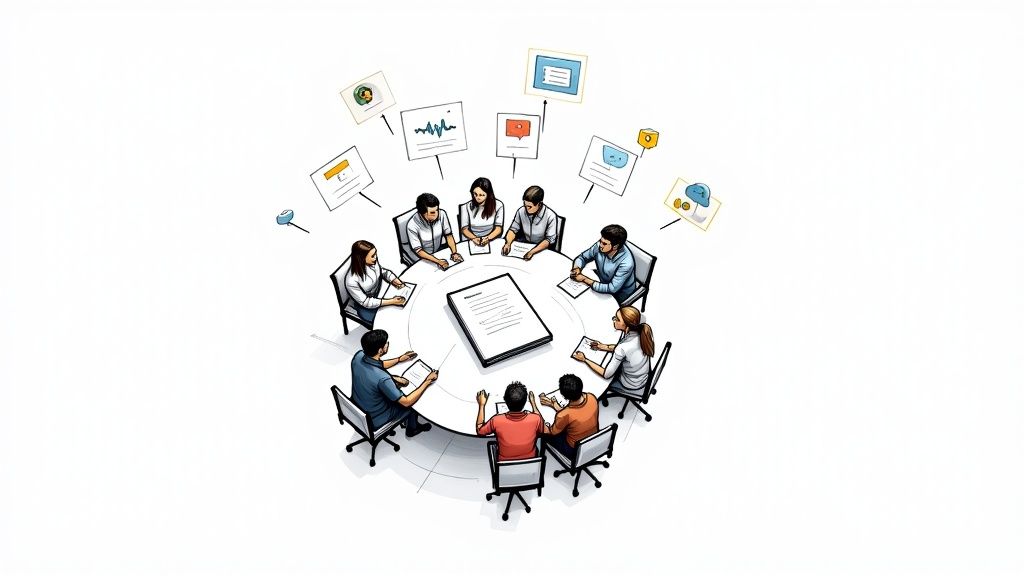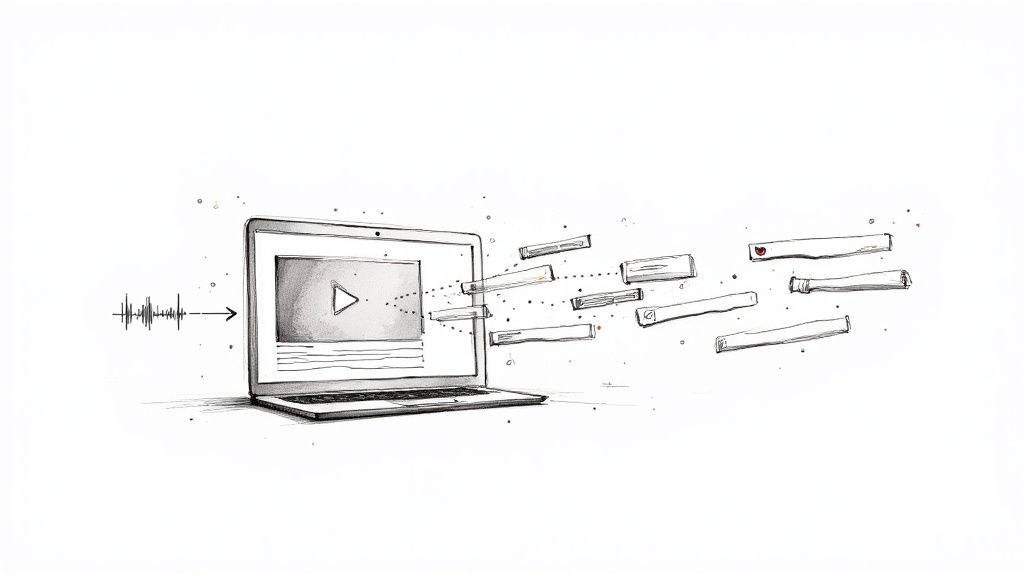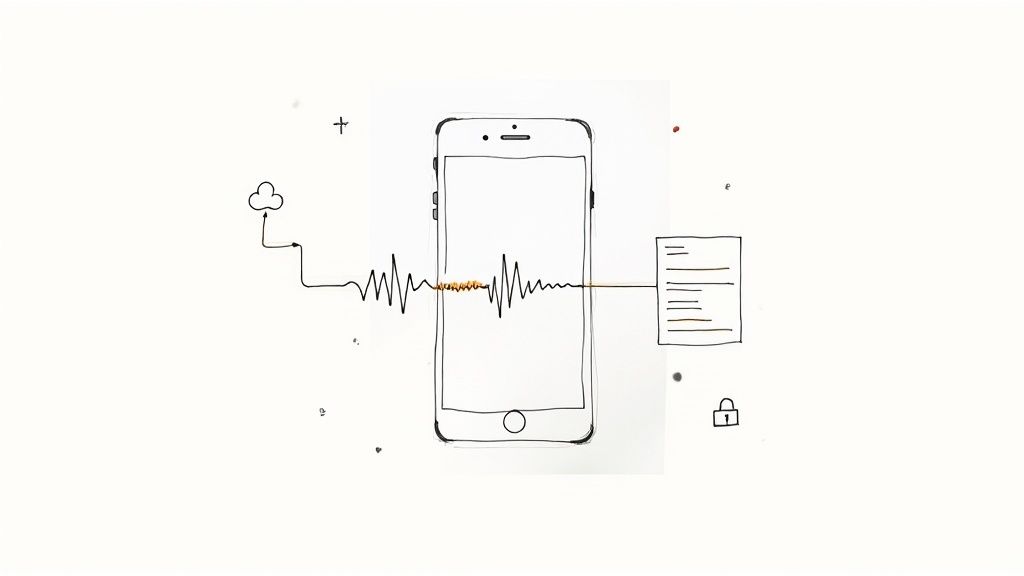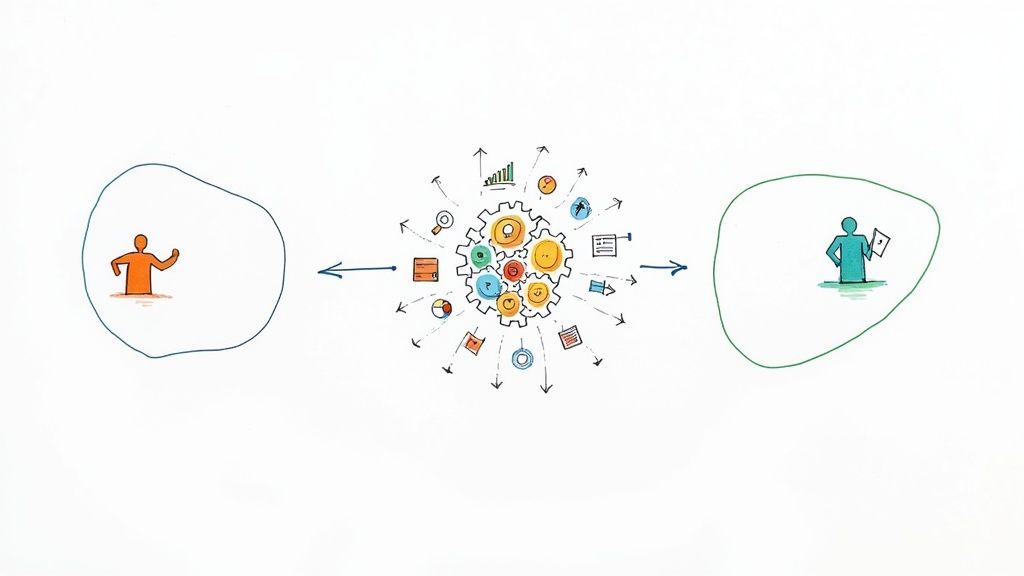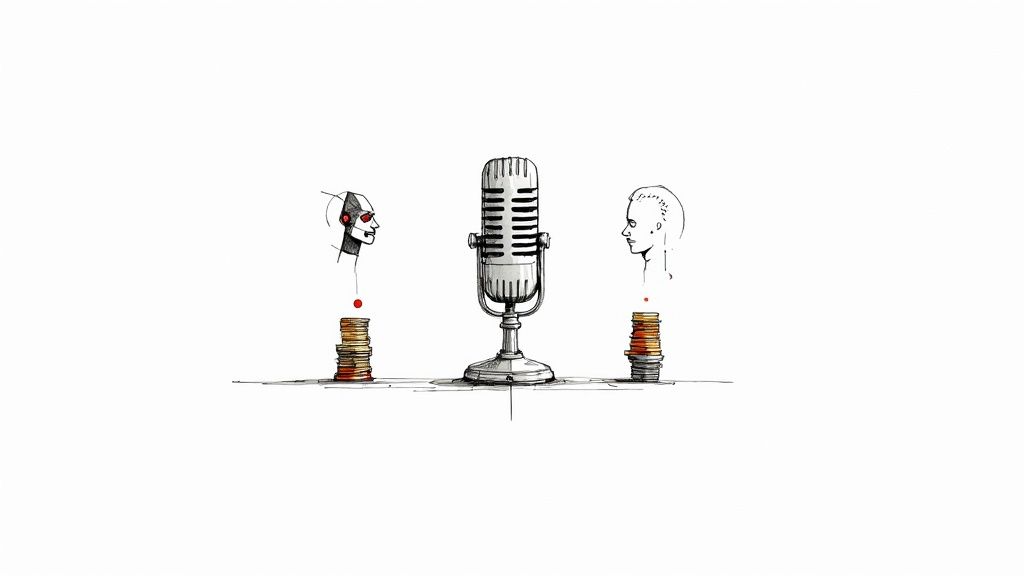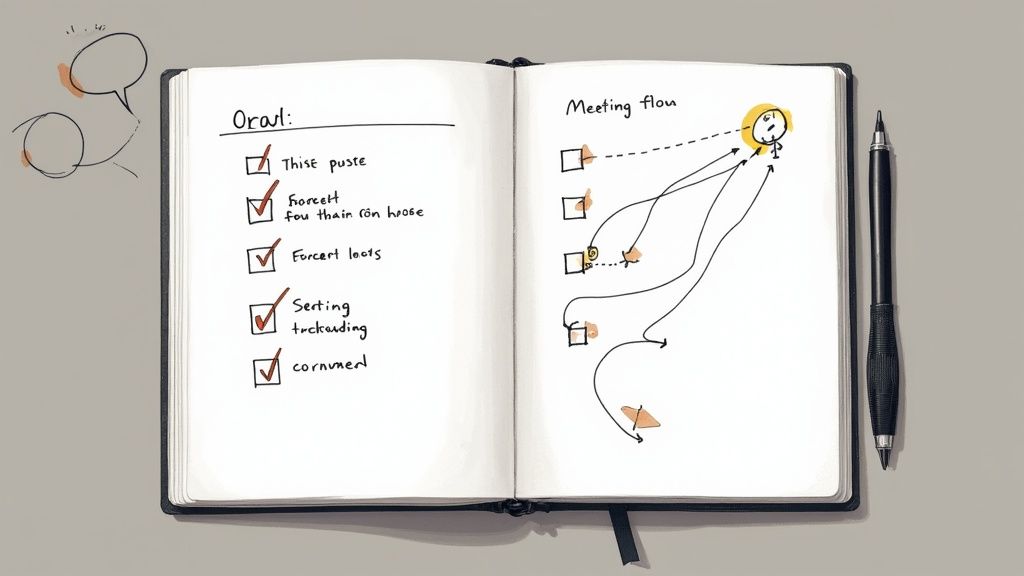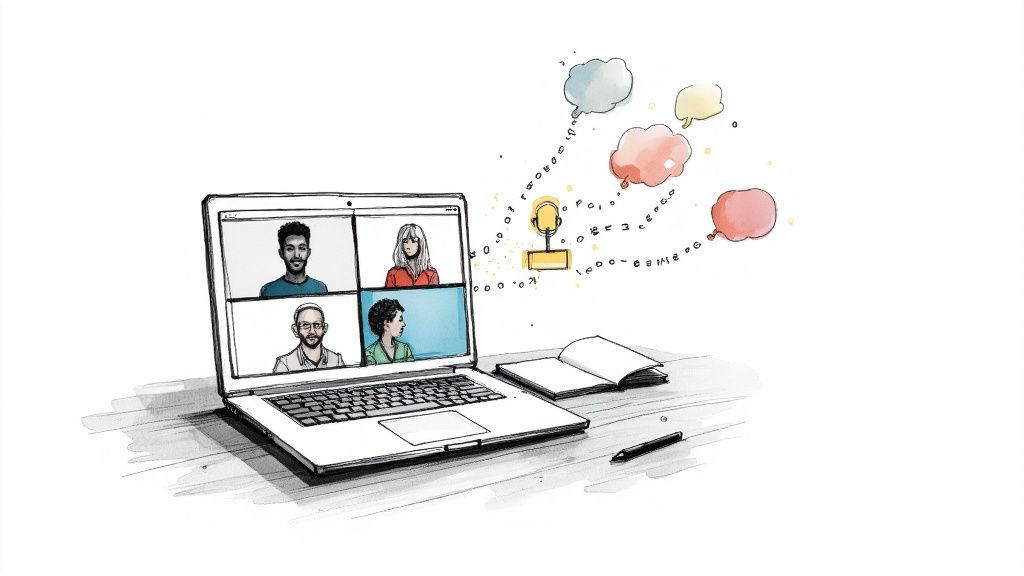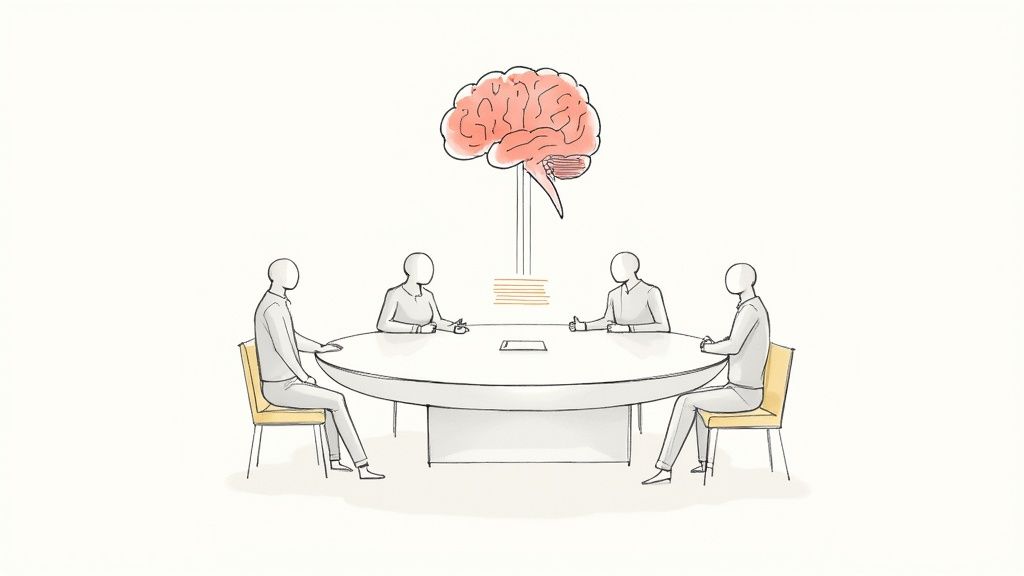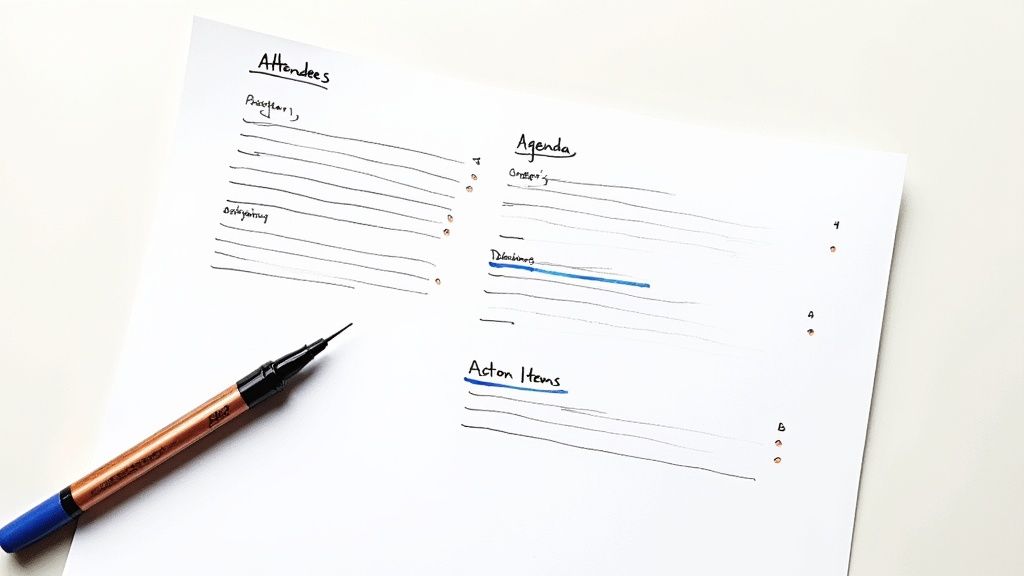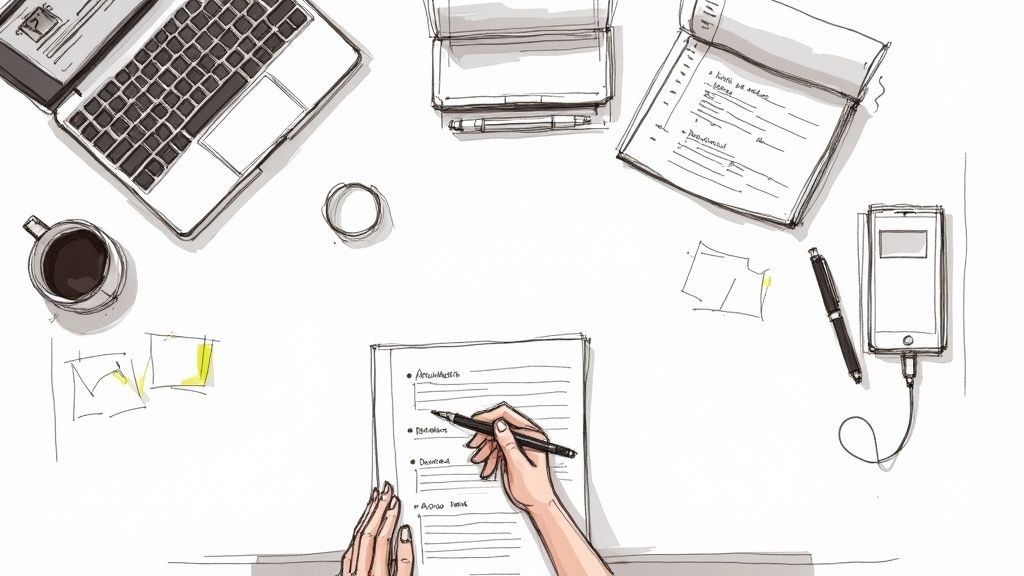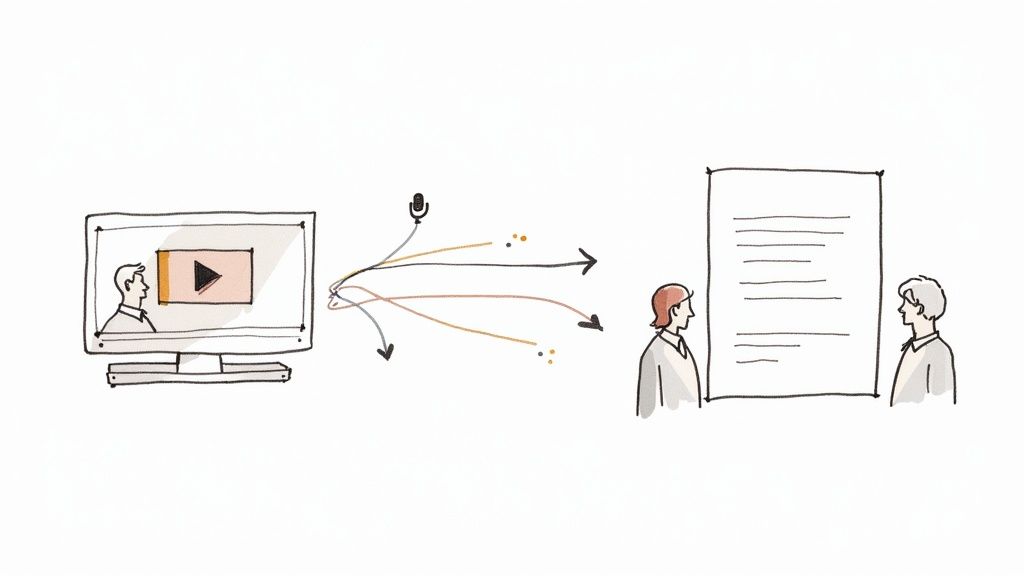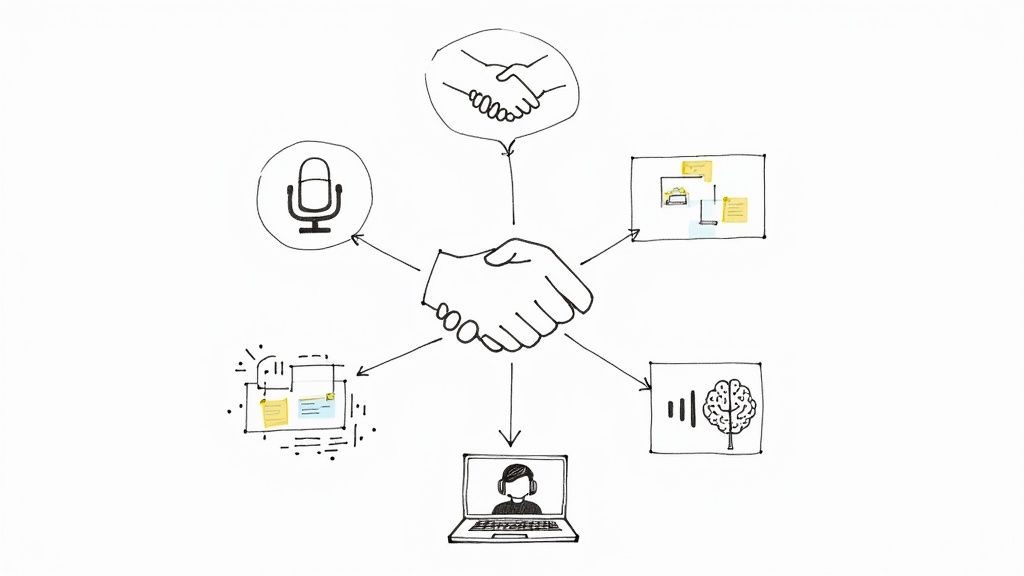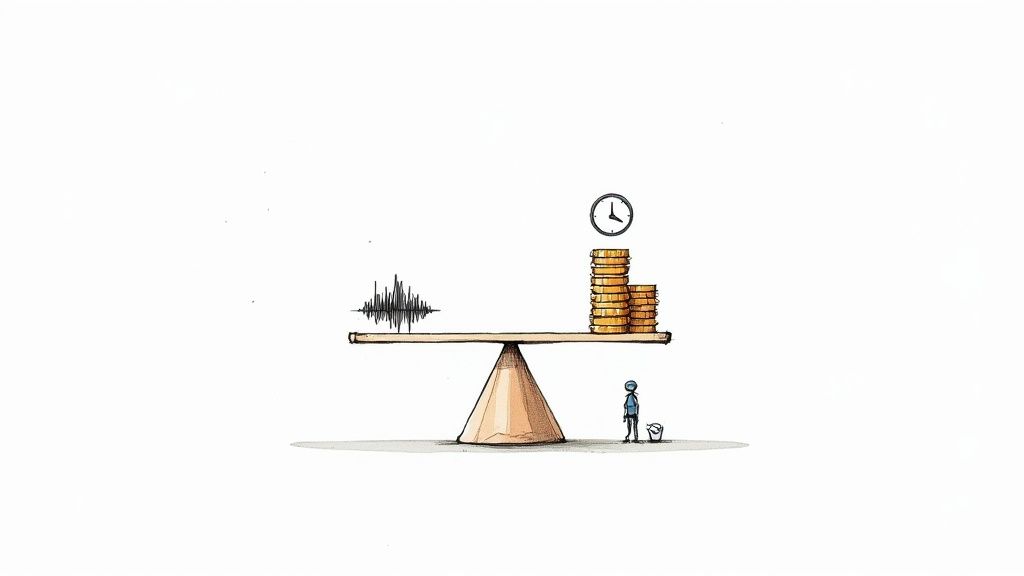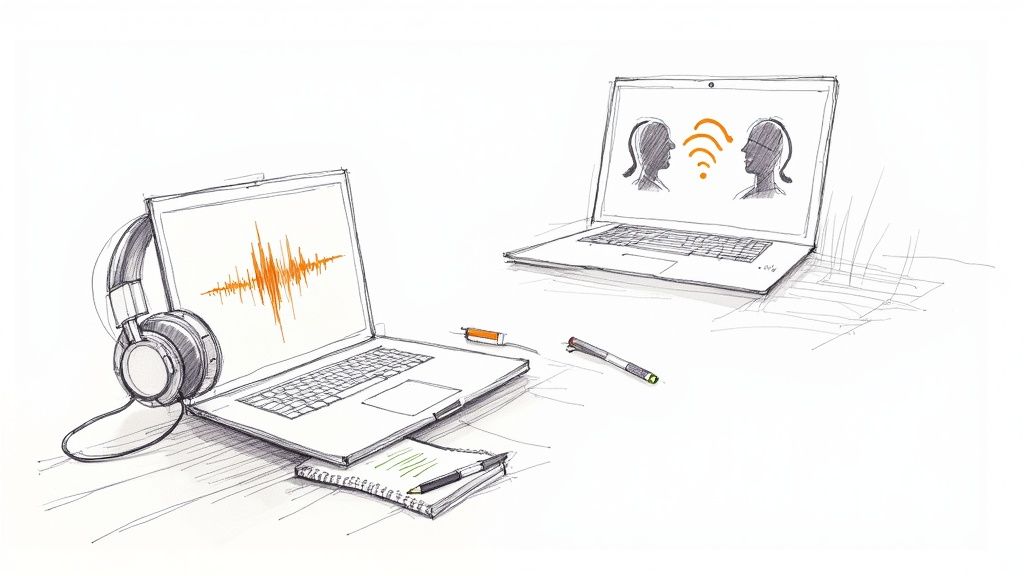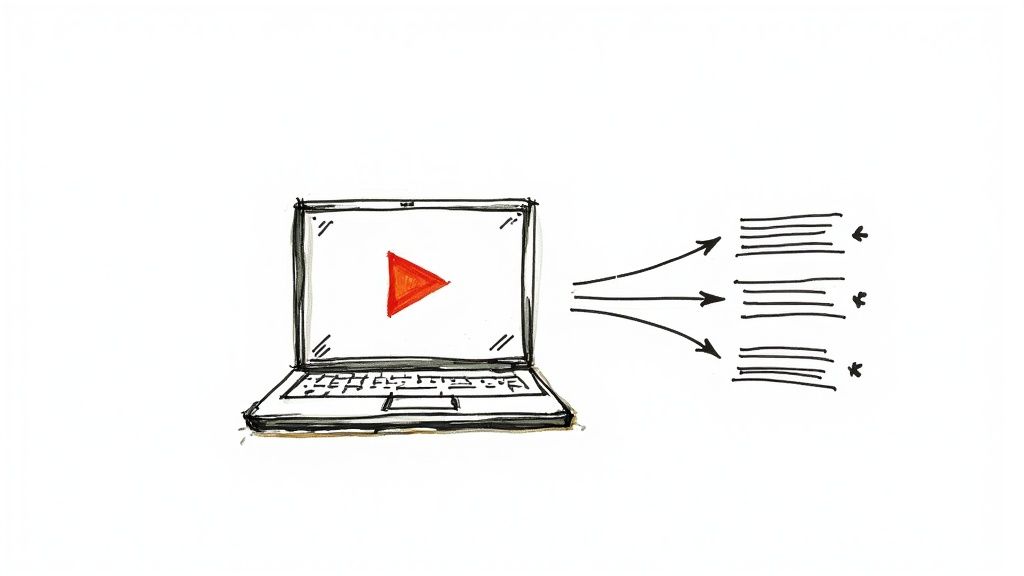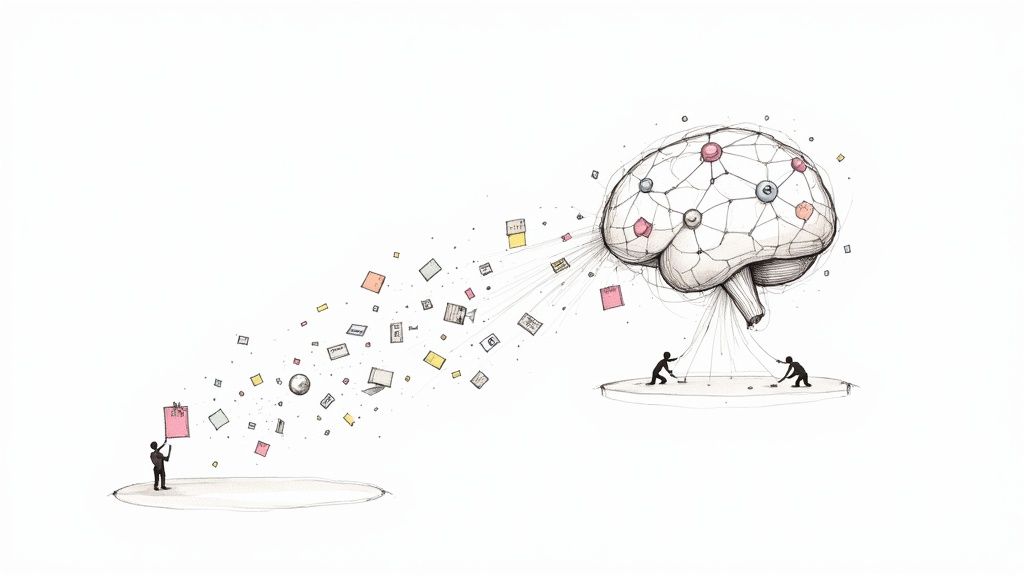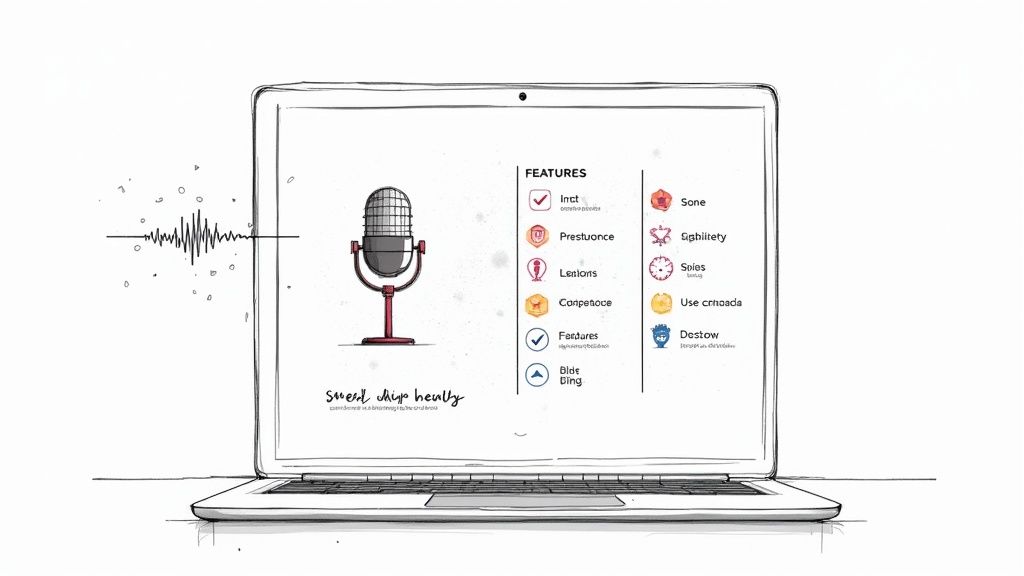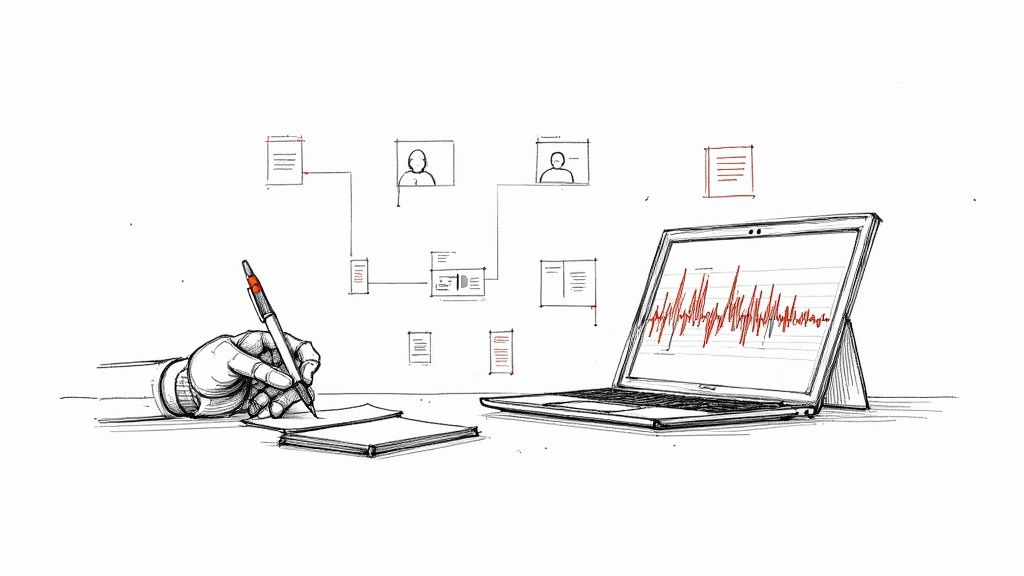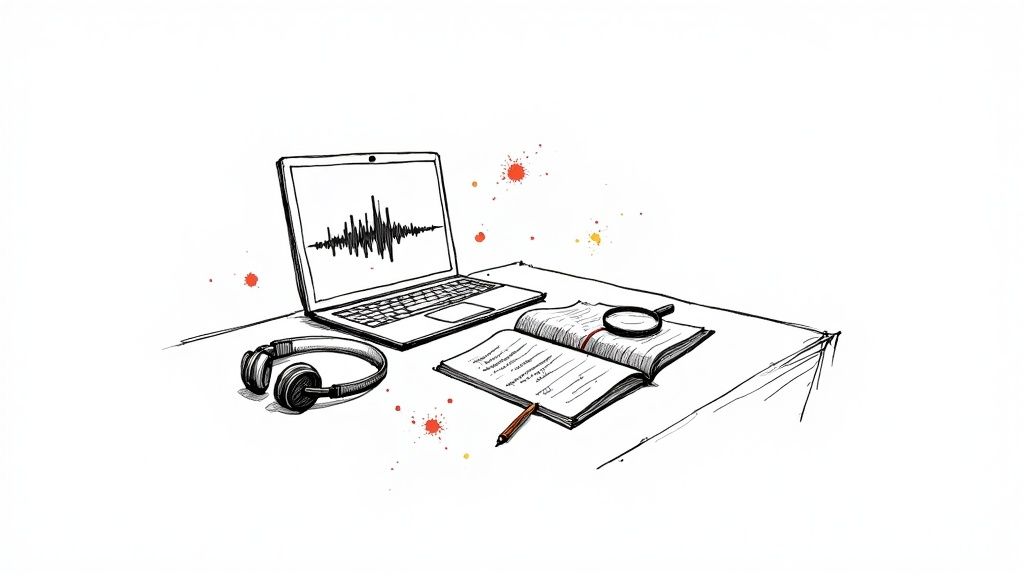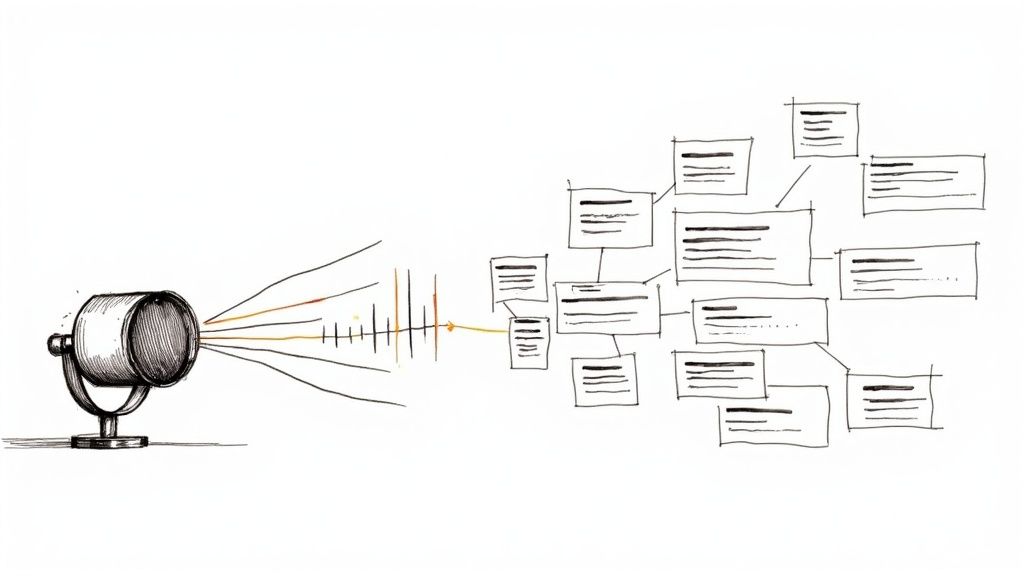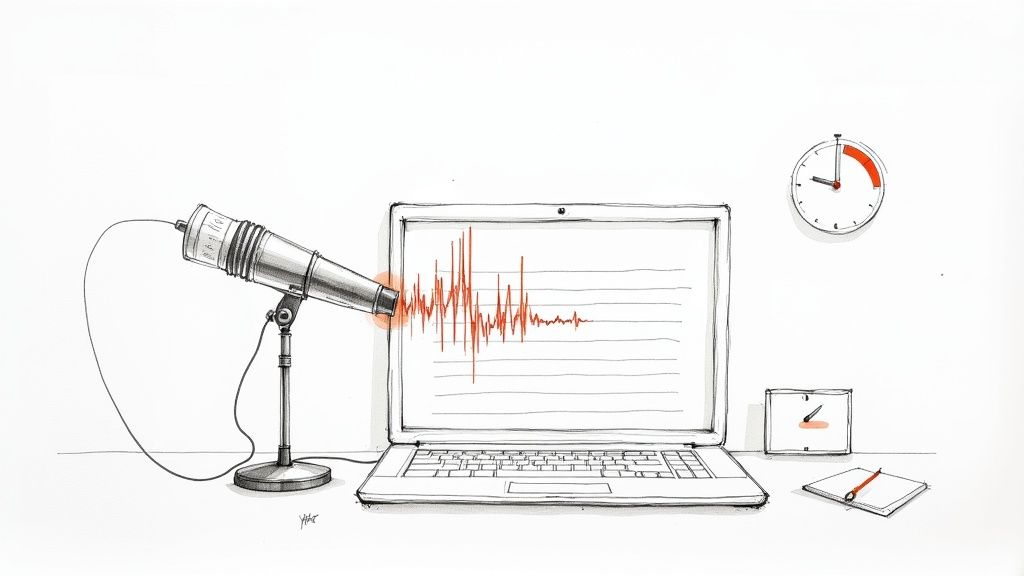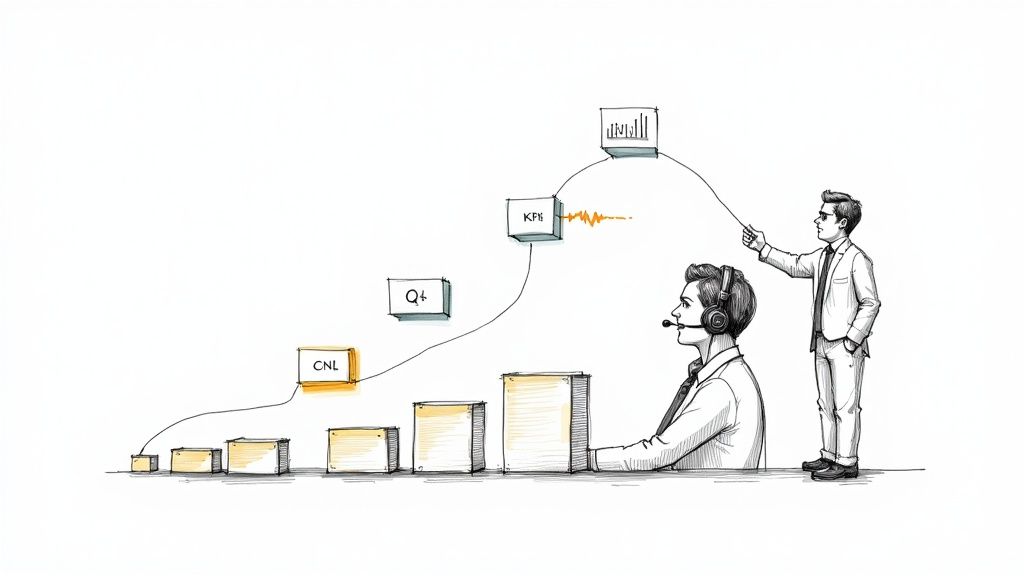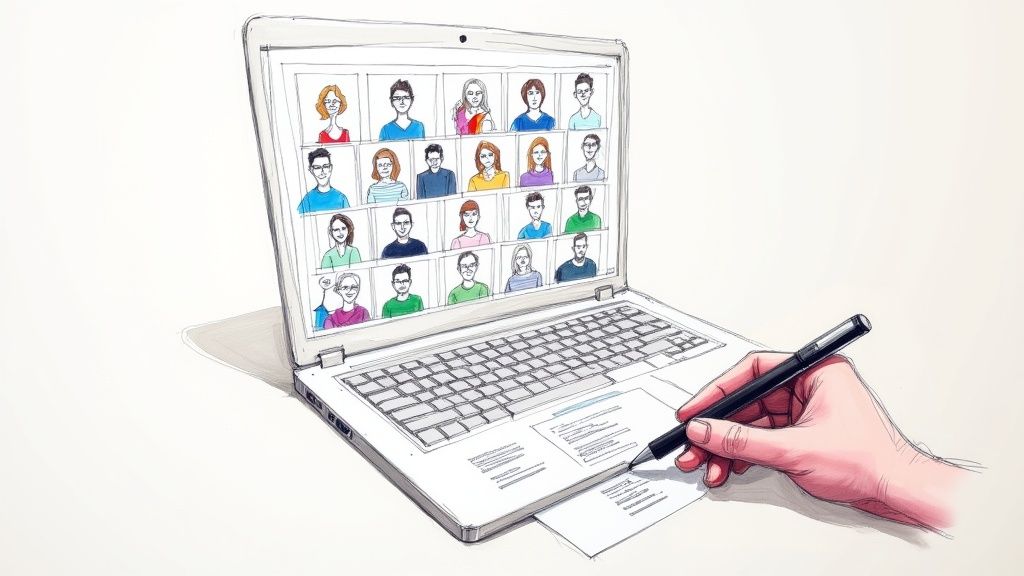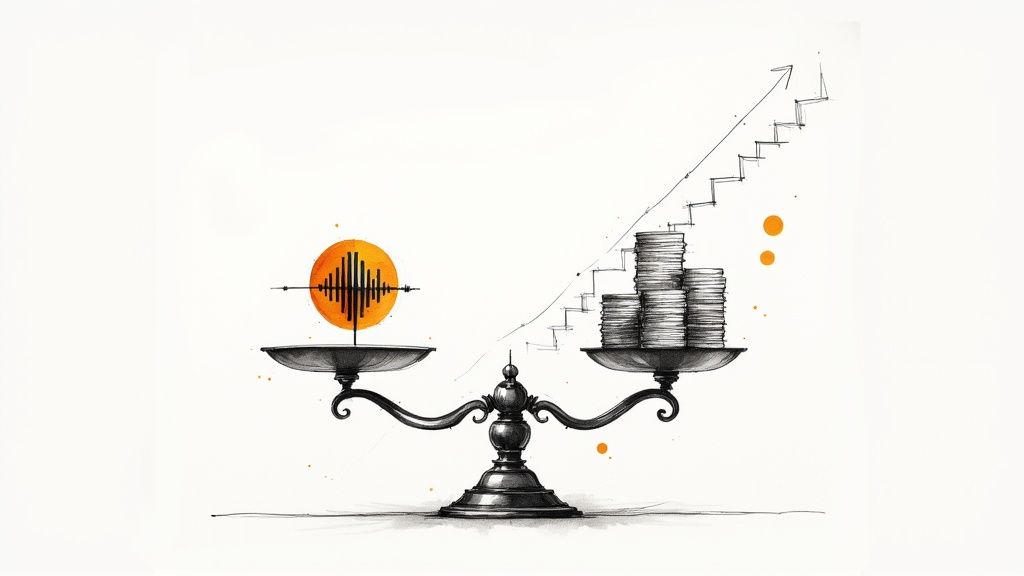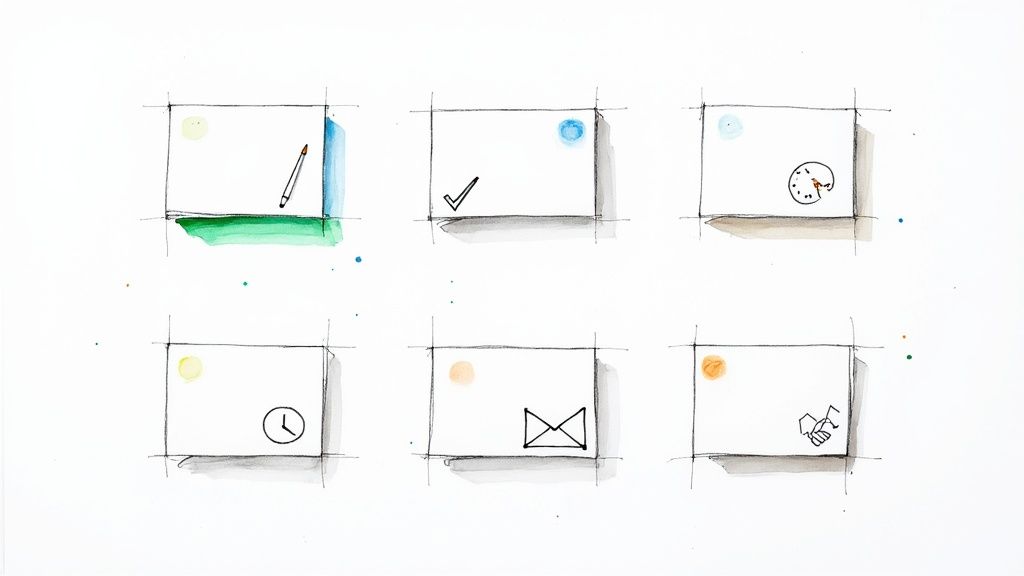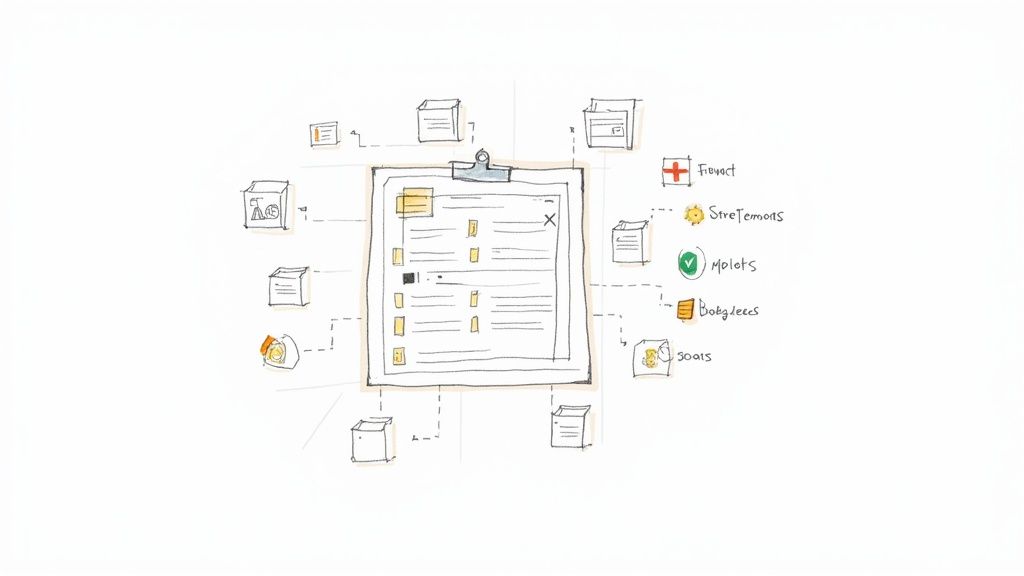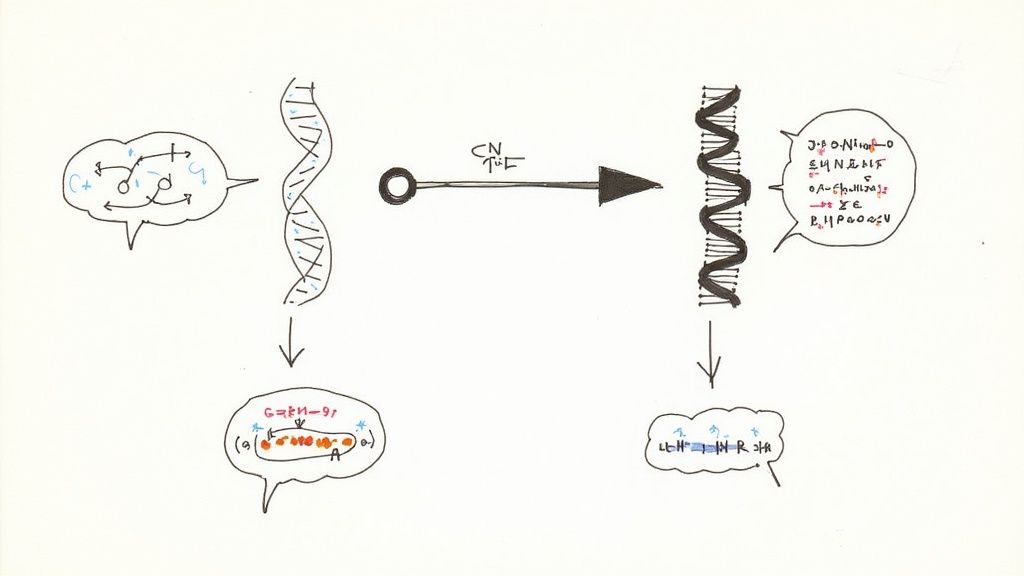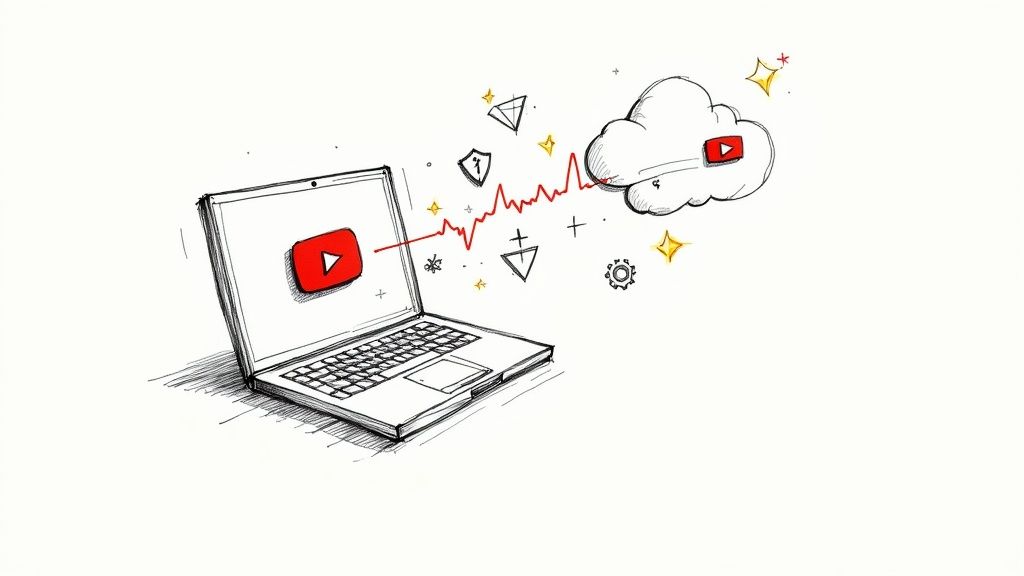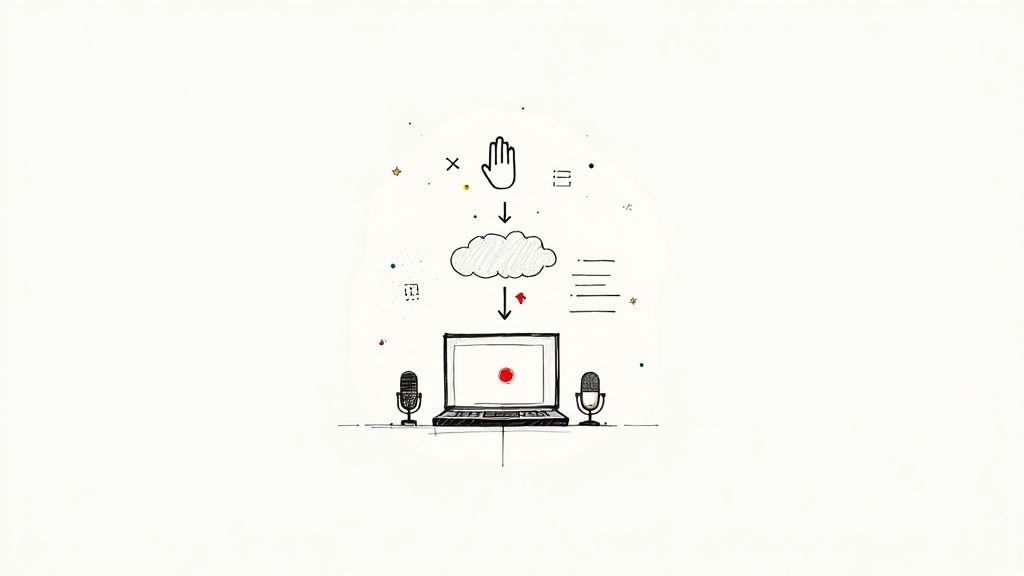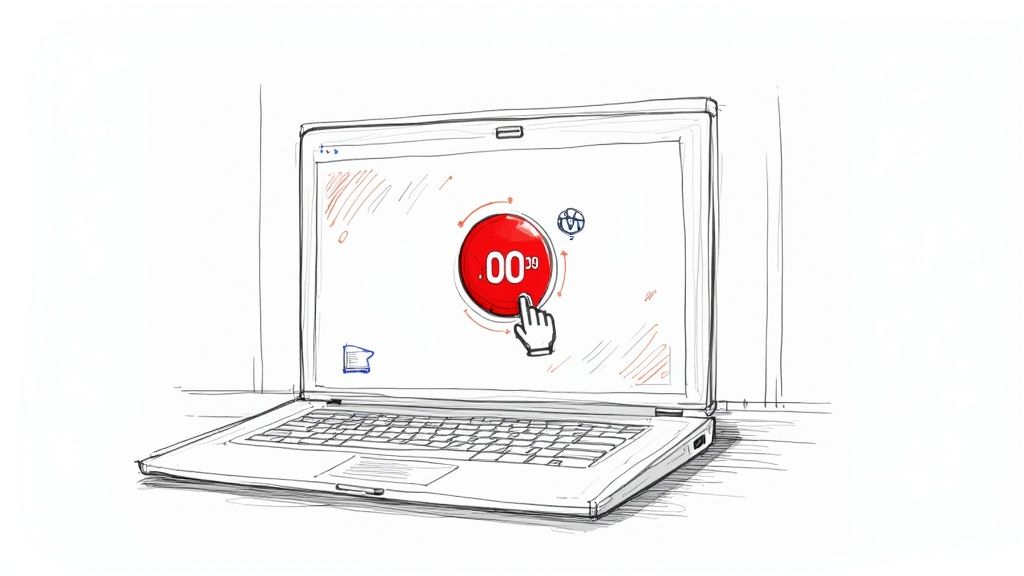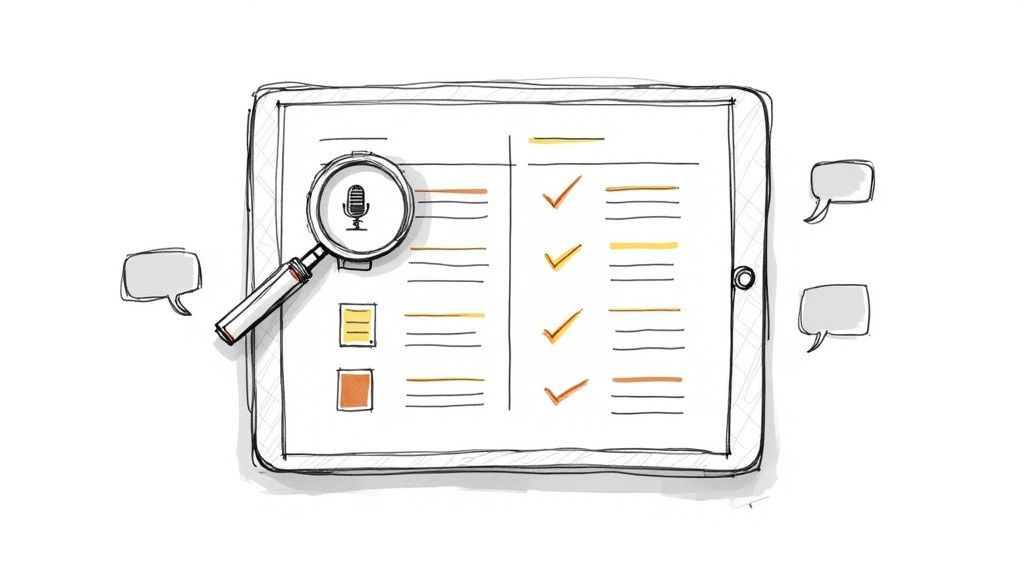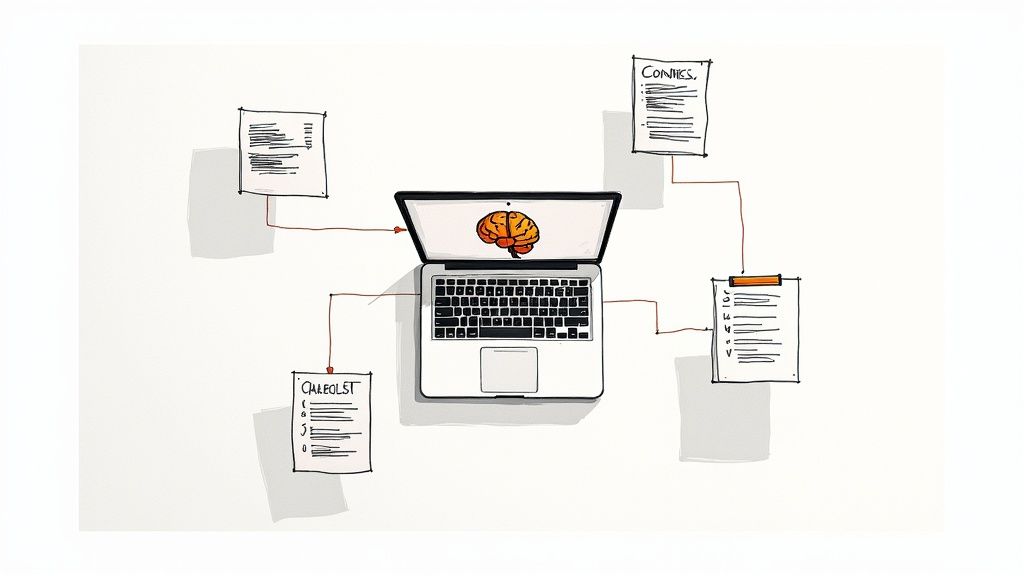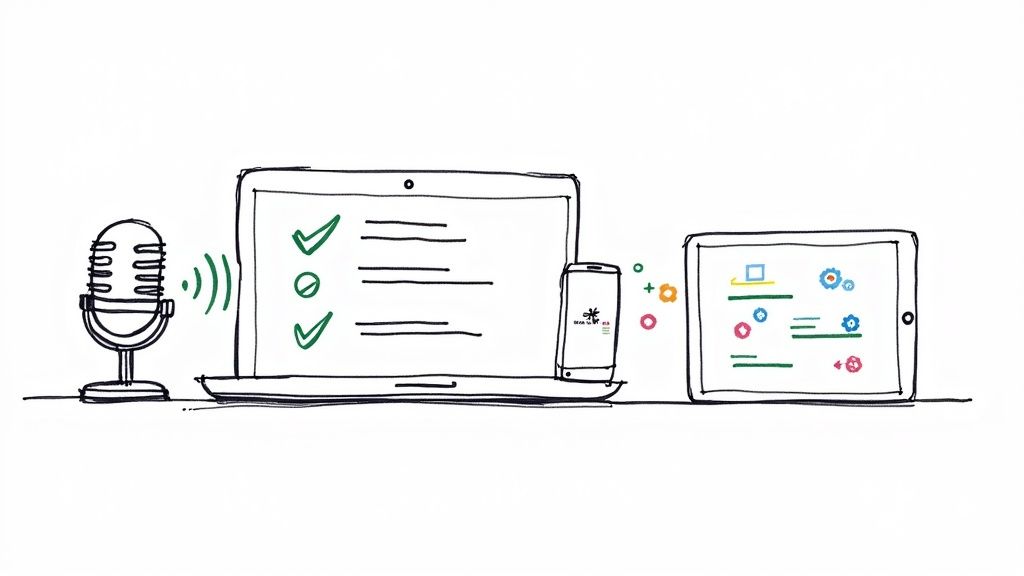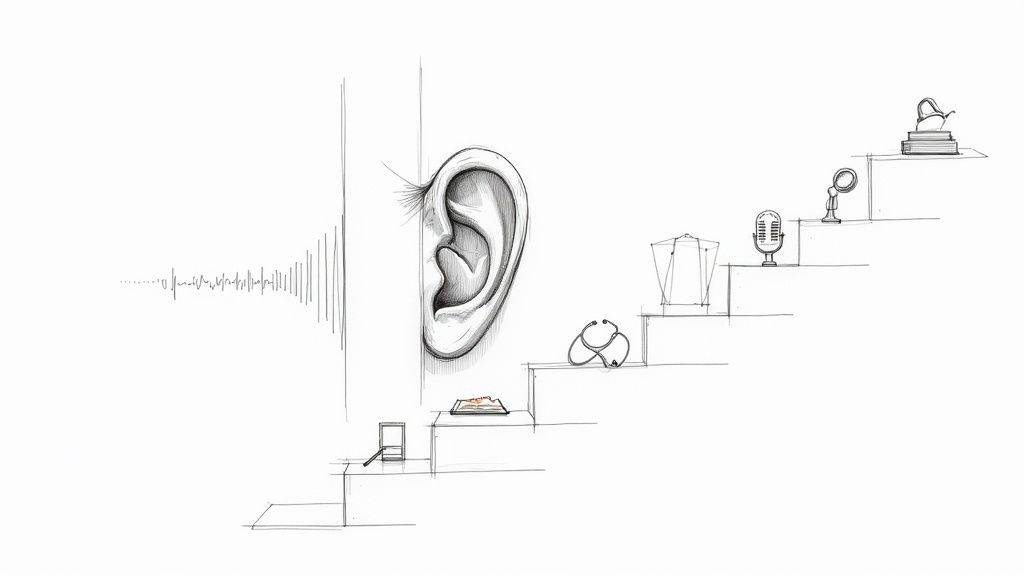How to Write Effective Meeting Notes and Action Items That Drive Results
Great meeting notes are the secret weapon that turns a vague conversation into real progress. From my experience, they’re the simple bridge between talking about an idea and actually getting it done. Without a clear record of what was decided and who’s doing what, even the most energizing discussions can fizzle out, leaving everyone wondering, "So, what happens now?"
Why Do Meetings Stall Without Clear Notes and Actions?

We've all been in that meeting. It ends, and a fog of confusion descends. What did we actually agree on? Who was going to take the lead on that? This happens all the time, and it's a direct result of skipping structured notes and defined action items.
When there's no official record, brilliant ideas get lost in the shuffle. Conversations that felt final end up becoming circular arguments in the next meeting because nobody can remember the exact outcome. You end up stuck in a frustrating loop of "déjà vu" meetings, hashing out the same topics again and again.
The Real Cost of Unproductive Meetings
This lack of clarity isn't just a waste of time—it chips away at team morale. When tasks fall through the cracks or are assigned without clear ownership, deadlines get missed and projects grind to a halt. In my own projects, I've seen it make people feel like their input doesn’t matter if it’s never captured or acted upon.
The gap between discussion and execution is a massive pain point for most organizations. Think about this: while professionals agree that clear objectives are essential for good meetings, a huge percentage of meetings don’t even have an agenda. It’s a huge disconnect. I once worked with a team that managed to double their project completion rate simply by getting better at documenting outcomes. You can explore more data on effective meeting practices to see the impact.
A meeting without notes is just a conversation. A meeting with clear action items is a catalyst for progress. It’s the single most important habit that separates teams that talk from teams that do.
Building a Foundation of Accountability
At the end of the day, solid meeting notes and action items are all about building a culture of accountability. When you write down decisions and responsibilities, there's no room for guessing games.
- Clarity on Ownership: Everyone knows exactly who is responsible for what.
- Visible Deadlines: Due dates are out in the open, creating a shared sense of urgency.
- A Source of Truth: The notes become the go-to record to clear up any confusion later on.
Once you recognize these common pitfalls, it’s easy to see why turning conversations into concrete commitments is so valuable.
How to Capture What Truly Matters in Meetings
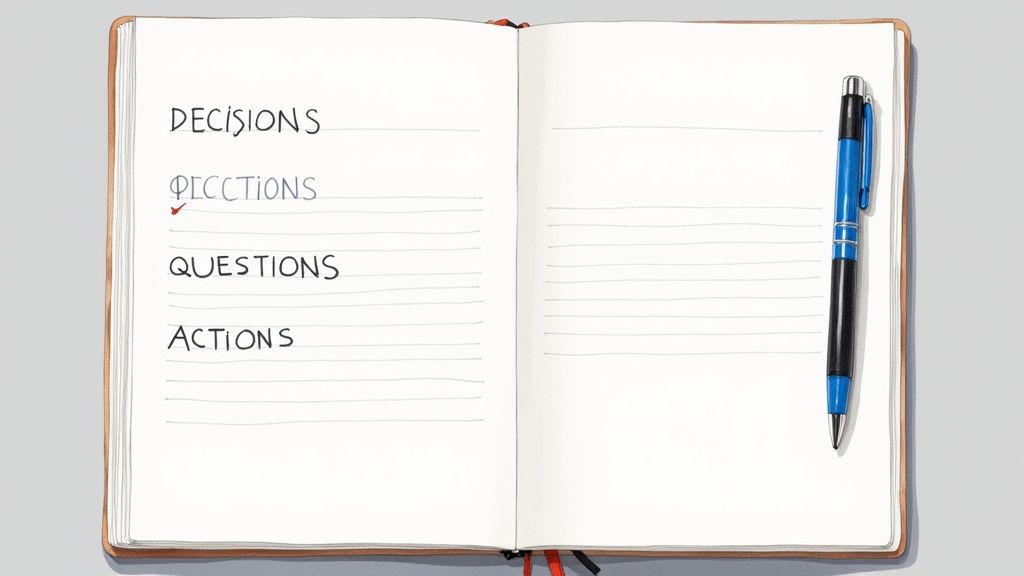
Let's be honest: no one wants to read a word-for-word transcript of a meeting. The real goal isn't to document everything that was said, but to capture every important decision, question, and commitment. Trying to write down everything is a classic mistake I made early in my career; it just creates a dense summary nobody will ever look at again.
You have to shift your mindset from being a court reporter to being a strategic filter. Your job is to listen for the signals that matter. You'll start to recognize them over time—phrases like, “So, we've decided…”, “The next step is…”, or “Can someone take charge of this?” are your cues to start typing.
From Discussion to Decision: A Practical Method
A simple trick I've learned is to structure my notes as the meeting unfolds, rather than trying to organize a messy wall of text later. It’s a game-changer for clarity.
I keep three simple categories open in my notes document from the very start:
- Key Decisions: A running list of the final conclusions we reach.
- Open Questions: Any unresolved items that need a follow-up or more information.
- Potential Action Items: Tasks that are starting to form but haven't been officially assigned yet.
This little system helps me process the conversation in real time. A decision gets made? It immediately goes under Key Decisions. Someone raises a great point we can't solve on the spot? It's logged under Open Questions. It turns a potentially chaotic discussion into a clean, organized record.
The most valuable meeting notes aren't about what was said, but what was decided. They should provide a clear and scannable path from conversation to action, ensuring nothing important gets lost along the way.
Ultimately, this approach helps you create a powerful summary that actually respects everyone’s time. It puts clarity over sheer volume, making sure your meeting notes and action items become a tool for making progress, not just another file saved and forgotten.
How to Turn Vague Talk into Concrete Action Items
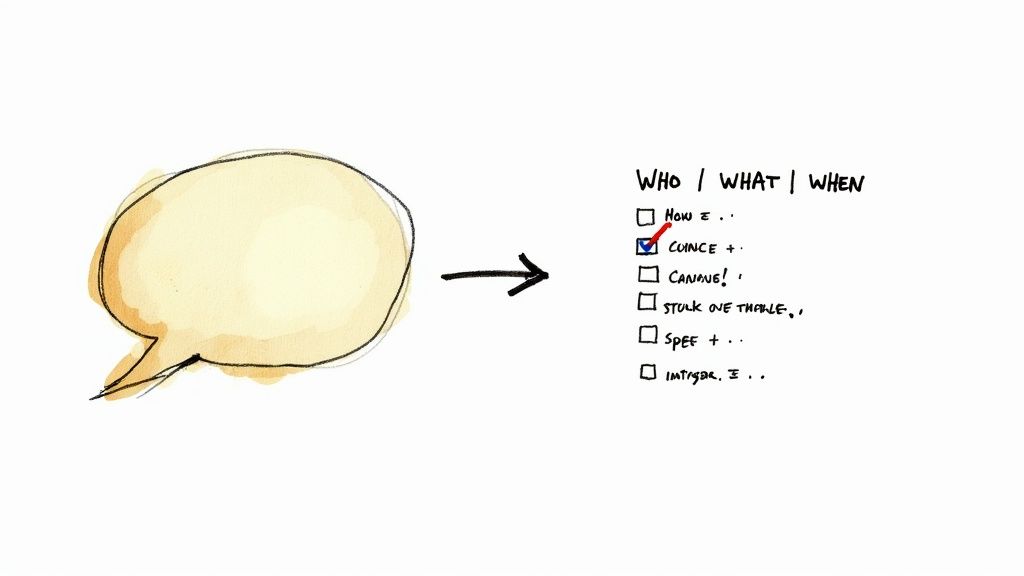
We've all been there: a meeting full of great energy and brilliant ideas, but a week later, nothing has actually happened. The momentum vanishes. This is where the real work begins—translating those conversations into commitments. Without a clear bridge from discussion to action, you're just left with good intentions and no results.
The trick is to develop an ear for potential tasks. When you hear phrases like, "We should probably figure out..." or "Someone needs to look into that," it’s your cue. Don't let the conversation just roll on. That's the moment to pause and pin down exactly what needs to be done.
The Who-What-When Formula for Clear Actions
To cut through the fog and create meeting notes and action items that actually work, I live by a simple rule: Who, What, and When. Every single task assigned in a meeting needs these three ingredients, no exceptions.
- Who: Assign the task to a specific person. "The sales team" is a recipe for diffusion of responsibility. "James from sales" is an owner.
- What: Be ridiculously specific. "Look into new CRMs" is vague. A better version is, "Research three potential CRM platforms and summarize the pros and cons of each in a one-page document."
- When: Give it a hard deadline. "Sometime next week" won't cut it. "By 4:00 PM on Friday, October 25th" is crystal clear.
This simple framework transforms a fuzzy idea like, "We should update our onboarding guide," into a concrete task: "Priya will add the new Q4 product features to the employee onboarding guide by this Wednesday." If you're looking for a good starting point, this action items template can help you build the right habits.
Here’s a pro tip I've found incredibly effective: Always get a verbal confirmation. After assigning a task, ask the owner, "Can you commit to that?" Hearing them say "Yes, I can do that" in front of the group creates immediate accountability and ensures everyone is on the same page.
Your Action Item Clarity Checklist
To make this even easier, I've put together a quick checklist. Before you finalize any action item, run it through these questions to make sure it’s ready to go.
Using this checklist ensures that every task leaving the meeting is clear, assigned, and has a defined deadline. This small bit of discipline is what separates meetings that generate talk from meetings that generate real, tangible progress.
Which Tools Should You Use for Your Meeting Workflow?
https://www.youtube.com/embed/DyuYvx1m4ZA
A solid process for capturing meeting notes is one thing, but that process is only as good as the tools you use to support it. To actually put your good intentions into practice, you need the right tech to fit your team’s size, workflow, and budget. The real goal here is to solve genuine problems—like ending the nightmare of manual transcription or making sure action items don't just vanish after the call ends.
This isn't about jumping on the bandwagon with the latest shiny app. It's about a strategic choice. A small, scrappy startup might do just fine with a shared Google Doc. On the other hand, a larger company will almost certainly need a dedicated meeting management platform that ties directly into their project management system. The key is to find something that removes friction, not adds another layer of complexity.
How Smart Tools Lead to Smarter Meetings
Modern tools can automate some of the most mind-numbing parts of managing meetings. AI transcription, for example, can capture an entire conversation with impressive accuracy. This simple feature frees everyone up to actually think and contribute instead of just being the designated typist. Honestly, it's been a game-changer for holding people accountable and keeping a clear record of what was actually said.
Don't underestimate the impact here. With many employees spending a significant portion of their time in meetings, any inefficiency is a massive resource drain. In fact, some research suggests that the right meeting intelligence tools can cut down meeting time while boosting overall productivity. You can see more about how meeting intelligence tools drive these results over at SuperAGI.
What to Look for Beyond Basic Note-Taking
As you look at different options, think beyond just a place to type notes. The real power comes from platforms that connect the conversation directly to what happens next.
Based on my experience, here’s what I’d be looking for:
- AI-Generated Summaries: Tools like HypeScribe can take a long, rambling discussion and boil it down to the essential takeaways and decisions. This can save you hours of re-reading or re-listening.
- Integrated Task Management: The ability to highlight a sentence, turn it into an action item, and assign it to someone with a due date—all within the meeting notes—is critical. It’s how you ensure things actually get done.
- Seamless Collaboration: Find a tool that lets multiple people edit and comment in real-time. Your meeting notes should be a living document, not a static file that’s instantly outdated.
Choosing the right tool isn’t just about convenience—it's about building a reliable system for follow-through. The best technology fades into the background, making it effortless to turn conversations into documented, actionable outcomes that drive your projects forward.
Platforms that bring all these pieces together are becoming essential for any team that's serious about execution. For a closer look at this, check out our guide on how AI can transform your meeting minutes.
How to Keep Momentum and Accountability After the Meeting
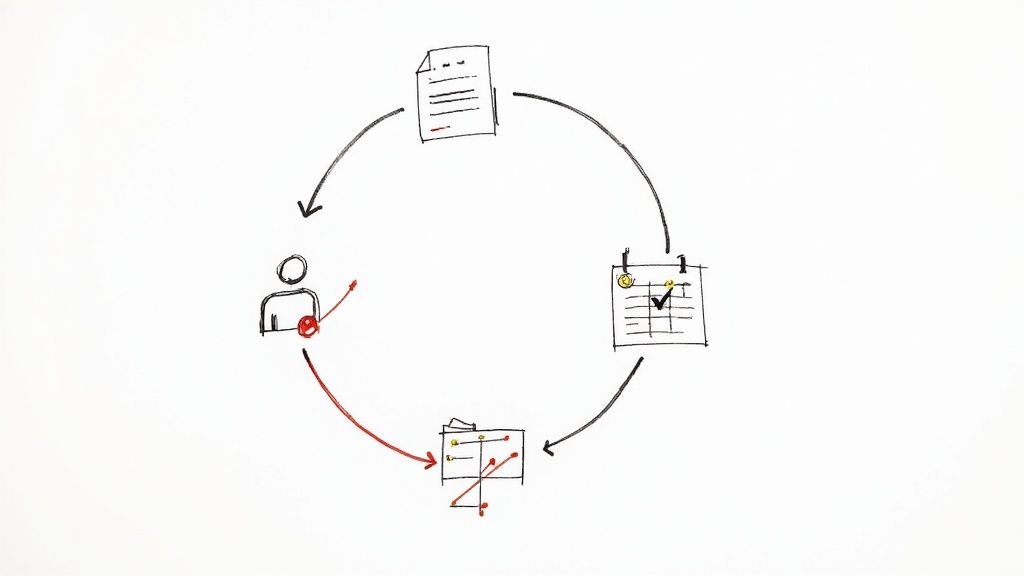
You’ve defined crystal-clear action items during the meeting. Great. But let's be honest, the real work starts after everyone logs off. Without a solid follow-up plan, even the best intentions get swallowed by the daily flood of emails and competing priorities.
The key is turning those documented tasks into tangible results. It’s all about creating a system that keeps everyone accountable and the progress visible.
The first, most crucial step is distributing the meeting notes and action items promptly. Forget sending a massive wall of text that no one will read. A sharp, concise email summary is your best bet.
Your recap should clearly outline tasks, owners, and due dates in a simple bulleted list. Get this into everyone’s inbox within 24 hours to capitalize on the momentum from the meeting. For a little extra help, you can always lean on a proven meeting follow up template to get the structure just right.
Establish a Simple Follow-Up Rhythm
You don't have to micromanage people to make sure things get done. Instead, set up a simple, predictable rhythm for checking in. This could be a quick ping in your team's Slack channel or a dedicated "Action Items" board in your project management tool.
Visibility is everything. When the whole team can see the status of each task, it naturally creates a sense of shared responsibility. Nobody wants to be the person holding things up.
The single most powerful habit for building accountability? Start every single meeting with a quick review of the action items from the last one. This creates a closed-loop system where tasks are consistently assigned, reviewed, and completed.
This one small change reinforces a culture of reliability. It sends a clear message: we don't just talk about doing things, we actually do them. When team members know their assigned tasks will come up for review, they are far more likely to get them done on time. Suddenly, meetings stop being isolated events and start feeling like connected steps toward a real, shared goal.
Your Questions About Meeting Notes, Answered
Even with a great system in place, you're bound to run into some practical questions when you're in the trenches managing meeting notes and action items. Let's tackle a few of the most common hurdles I see teams face. Getting these right can make a world of difference.
Who should be responsible for taking notes?
In a perfect world, this job rotates. Passing the baton encourages everyone to pay closer attention and prevents one person from getting stuck as the permanent scribe. It's a simple way to build shared ownership.
However, for really critical project meetings, consistency is king. Having a dedicated project manager or team lead take the notes ensures nothing gets lost in translation from one meeting to the next.
The golden rule? Decide before the meeting kicks off. Or, you could let an AI note-taker like HypeScribe handle it automatically, freeing up the entire team to just focus on the conversation.
The best format for your notes is whatever is easiest for your team to actually use. It needs to be accessible, scannable, and plug right into your existing workflow. The whole point is to make life easier, not to add another tedious task to everyone's plate.
How quickly should meeting notes be sent out?
Get them out within 24 hours. Seriously. This is non-negotiable if you want to keep the momentum going.
The conversation is still fresh in everyone's mind, so the context is there. If you wait any longer, people forget the details, the urgency fades, and you risk the meeting's impact fizzling out. A prompt summary shows you value everyone's time and that the follow-up matters just as much as the meeting itself.
What's the best way to share the notes?
It really depends on the context.
- For quick, one-off meetings: A simple email with a bulleted list of action items is usually all you need. Just make sure you clearly list who owns what and when it's due.
- For ongoing projects: Don't rely on email. Put the notes directly into a shared document or, even better, create tasks in your project management tool (Asana, Trello, etc.). This keeps everything in one place and makes it easy for everyone to track progress.
What should you do if someone disagrees with the notes?
This happens, and it's best to tackle it head-on. If a team member flags something in the notes they don't agree with—a decision, an action item, you name it—address it immediately.
Don't let it fester. Send a quick clarification to all the attendees, outlining the point of confusion and asking for input to get everyone back on the same page. A little proactive communication here can prevent a small misunderstanding from snowballing into a major roadblock later.
Ready to stop worrying about note-taking and make sure nothing ever falls through the cracks again? HypeScribe uses AI to create spot-on transcripts, smart summaries, and crystal-clear action items in just a few seconds. You get to focus on the conversation, not the keyboard. Start your free trial today and see how much more productive your meetings can be.



